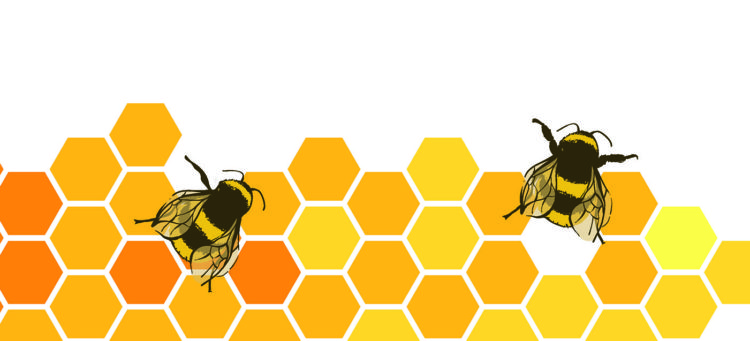
In the Spotlight
Beeswax: Easy, beesy, beautiful!
March, 2017
There’s been a lot of buzz about bees lately. And for good reason. These productive little pollinators play a big role in our planet’s prosperity, and beekeepers everywhere are working hard to keep their hives healthy. If you’ve ever lathered honey onto a slice of homemade bread, you likely already appreciate the efforts of the humble honeybee and their keepers. But are you also a fan of the other major product that honey brings to the table? Here’s what to love about beeswax.
Busy Little Bees
Honey isn’t the only delightful by-product of a healthy hive—the other is beeswax, and its production is quite remarkable. When worker bees are approximately twelve days old, they are ready to produce wax. They begin by ingesting honey, which is converted within their bodies and secreted through eight glands located on their abdomens. Those secretions solidify into wax after being exposed to the surrounding air. The bees then chew the wax to make it malleable and shape it into honeycombs. They also form sheets of wax, called capping wax, to cover and protect combs that are full of honey. The process is an arduous one—a worker bee must eat six to eight pounds of honey to create one pound of wax! Both the capping wax and the original honeycombs can be melted down and purified for use in wax products.
Waxing Historic
There is wisdom to be found in the study of ancient cultures, and a quick search will uncover several diverse references to the benefits of beeswax. Old Chinese medicine books list it as a key remedial ingredient to be used topically or ingested. Early Egyptians used it for embalming bodies and for making writing tablets. The Roman Catholic Church once stipulated that only high-grade beeswax candles could be used during their religious services. The versatile material was used to seal documents, preserve valuable scrolls and to protect paintings and dyed fabrics.
Artisans around the world also once employed the lost art of wax casting to create elaborate ornaments and statues—sculptors carved intricate designs into the solid wax, which was later covered with warm clay. As the clay dried, the wax melted, leaving a perfect cast to be filled with liquid metal.
Become a Bee-liever
Today, the antibacterial and hydrating properties of beeswax continue to be recognized in a number of different industries. It is a chief ingredient in cosmetics and often found in body lotions, hair conditioners, deodorants, beard and mustache waxes, lip balms and eye makeup. It is added to ointments to help treat skin conditions such as psoriasis and eczema. And soap makers use it to make creamy, natural soaps.
Jewellers use beeswax to make casting moulds. And musicians use it to moisturize the mouthpieces and strings of musical instruments. In its more practical applications, beeswax is used to keep wood furniture supple and polished and to waterproof leather and other materials. Of course, it is also formed into candles, which burn much cleaner and longer than their paraffin alternatives.
Beeswax Vs. Paraffin
Pure beeswax candles cost a pretty penny, but the investment is worthwhile. The most popular substitute to beeswax is the paraffin candle, which costs much less and can be processed into many synthetic scents. However, what concerns some people is that paraffin wax is derived from petroleum waste—the crude-oil refining process leaves behind a toxic sludge that is then converted into paraffin products. Burning these candles produces soot and releases exhaust-like pollutants. Beeswax candles, on the other hand, are natural and environmentally friendly products that actually contribute to the air quality in your home—the negative ions released when burning beeswax neutralize odours, bacteria and other airborne impurities. The hypoallergenic candles have a natural honey and floral smell and are even believed to contribute to a more restful sleep when burned before bedtime. The higher melting point of beeswax also means that these candles burn longer and more evenly, giving them a much longer shelf life than their substitutes. t8n
The Fall of Icarus
In Greek mythology, renowned craftsman Daedalus and his son Icarus escaped imprisonment by building themselves wings made of feathers bound with beeswax. The over-eager Icarus flew too close to the sun and plummeted to his death when the wax holding his wings together melted.
Fun Fact
When it comes to the hive, females rule the roost. All worker bees—nurses, guards, foragers and other hive attendants—are female. The male bees, called drones, are few in number and only serve the hive by mating with the queen before being forced out of the colony.













